In case your time is short
Exceptional incident management isn’t about chasing the newest tools—it’s about building clear processes, investing in skilled people, measuring what matters to the business, automating thoughtfully, and improving continuously.
INOC’s process flow starts with accurate event correlation, senior-engineer-led triage, dynamic prioritization, and automation for routine diagnostics, while keeping humans in control for complex decisions.
Every incident is an opportunity to learn, document, and prevent future issues. This approach consistently delivers faster resolution, fewer escalations, and stronger business outcomes.
After more than two decades of refining NOC operations and supporting thousands of infrastructure environments, I've seen what separates exceptional incident management from the mediocre (and worse).
The difference isn't just technology—though that certainly plays a role. It's the marriage of structured processes, intelligent automation, and human expertise that creates really effective incident response.
Let me walk you through the incident management process flow we follow today—not as a theoretical framework, but as an actual operational model that's been stress-tested across millions of incidents. It's what we're running right now for hundreds of companies—24x7. I'll share what we've learned, what most teams get wrong, and how you can build or improve your own incident management capabilities—or make the case for outsourcing your NOC function to a capable third-party.
Before we jump in, watch my quick explainer below that outlines how our NOC correlates events and manages incidents at machine speed.
| 📄 Read our companion guide: A Complete Guide to NOC Incident Management |
The Foundation: Why Most NOCs (Still) Struggle With Incidents
Before diving into our process, let's address the elephant in the room: Most NOCs fail at incident management not because they lack smart people or good tools, but because they approach it backwards. They start with the technology, bolt on some processes, and wonder why their MTTR remains stubbornly high. We see it all the time.
The truth is, effective incident management starts with understanding three critical elements that must work in harmony:
|
Get any one of these wrong, and you'll struggle (especially as you scale). Get them all right, and you'll achieve what we consistently deliver: 60-80% Tier 1 resolution rates and dramatically reduced escalations.
Step 1: Event Detection and Ingestion
Every incident starts as an event: an alarm from your infrastructure, a phone call from a user, an email alert, or increasingly, a predictive warning from AIOps. At INOC, like many NOCs, we ingest events from multiple sources simultaneously:
|
The biggest mistake teams make here? Treating all events equally. A critical outage notification shouldn't sit in the same queue as an informational alert about scheduled maintenance. We also see many support teams frequently fail to correlate related events, creating multiple tickets for what's actually a single incident.
To get detection and ingestion right in 2025, you need at a minimum:
- Tools: A robust event correlation engine (we use our AIOps platform with machine learning capabilities), integration APIs for multiple monitoring platforms, and a unified ingestion point.
- People: This step should be largely automated now, but you certainly need platform engineers who understand event correlation patterns and can tune the system.
Here at INOC, Our Ops 3.0 platform uses machine learning to correlate events in real-time. When multiple alarms fire—maybe 50 alerts from a single site going down—our system recognizes the pattern and creates a single incident ticket, not 50 as some teams might. We've trained our models on millions of incidents, so they can distinguish between a site-wide outage and multiple discrete issues with remarkable accuracy.
|
Below is a high-level schematic of our Ops 3.0 platform. Read our in-depth explainer for more on it.
The workflow generally moves from the left to the right of the diagram as monitoring tools output alarm and event information from a client NMS or ours into our platform, where several tools process and correlate that data, generate incidents and tickets enriched with critical information from our CMDB, and triage and work them through a combination of machine learning and human engineering resources. ITSM platforms are integrated to bring activities back into the client's support environment and the system is integrated with client communications. |
Oh, and here's something we've learned the hard way: invest heavily in this correlation layer. Every duplicate ticket you create wastes engineering time and clouds the real issues. We've found that every dollar we invest in better correlation pays incredibly more dividends for our clients downstream.
Step 2: Initial Triage and Categorization
This is where human intelligence first touches the incident. It's some of the most critical few seconds or minutes in the life of an incident. At INOC, our Advanced Incident Management (AIM) team—senior NOC experts, not junior engineers—performs the initial analysis.
They determine:
|
Most NOCs hand new tickets directly to Tier 1 engineers. That's a costly mistake. You end up with inexperienced staff spending 30-45 minutes trying to understand issues that a senior engineer could diagnose in 5 minutes. Worse, they might misdiagnose the problem entirely, sending the incident down the wrong troubleshooting path. We see it all the time when we're brought in to consult on a NOC operation.
Here's what you need to triage and categorize incidents well:
- Tools: A CMDB for understanding infrastructure relationships, automated enrichment tools that pull relevant configuration data, and a knowledge base with previous incident patterns. This is absolutely critical and almost always missing in NOCs.
- People: Senior NOC engineers with broad troubleshooting experience—these aren't your entry-level staff.
In our operation, we've pretty much restructured the traditional NOC model. Our AIM team sits upstream of Tier 1, performing initial triage on every incident. They create an action plan that guides all downstream work. This approach might seem counterintuitive—having senior engineers look at every ticket—but it dramatically improves overall efficiency.
|
The math is simple:
|
Step 3: Priority Assignment and Routing
This next step is about getting the right incident to the right people. Based on the initial triage, incidents should be assigned priorities that determine their workflow.
Here's the framework we use:
|
What we see teams get wrong here is either not using priority levels at all (which treats every incident the same) or static priority models that don't account for business context. A server alarm at 3 AM might be low priority—unless it's your payment processing server on Black Friday.
Teams also fail to dynamically adjust priorities as situations evolve. Nothing is static!
Here are the basic ingredients for success in assigning and routing incidents:
- Tools: Dynamic priority engine that considers business rules, time of day, and service dependencies.
- People: Analysts who understand service impacts to a business or team and can codify priority rules accordingly.
Our NOC automatically assigns initial priorities based on alarm type, affected services (pulled from our CMDB), and client-defined business rules. But again: priorities aren't static. If an incident isn't progressing, our system automatically escalates it. We also maintain a "watch list" for tickets that need special attention—perhaps the client CEO called about it, or it's affecting a critical business process.
Step 4: Investigation and Diagnosis
Here's where human expertise meets AI-enabled automation. Engineers execute the action plan created during triage.
Here at INOC, this involves:
|
We see just about every support team continue to fall down here—manually gathering data for almost every incident. When we step into a NOC environment, it's not uncommon to see engineers spend 15-20 minutes collecting interface statistics, checking logs, and running diagnostics—all tasks that should be automated. A lot of NOCs also often work in isolation, not leveraging historical incident data that could provide immediate answers.
The requirements for excelling here include:
- Tools: Automated runbooks, diagnostic scripts, access to historical incident data, integration with device CLIs.
- People: Tier 1 engineers for standard issues, Tier 2/3 for complex problems.
Here's where our investment in automation pays dividends. When an engineer picks up a ticket, much of the diagnostic work is already done. Our platform has already:
- Collected interface statistics.
- Pulled relevant logs.
- Checked for recent changes.
- Identified similar past incidents
We're also testing GenAI capabilities that can suggest probable causes based on symptoms. It's not about replacing engineers—it's about giving them superpowers. Instead of spending 20 minutes gathering data, they spend that time actually solving the problem.
Step 5: Resolution Actions
Now we're executing the fix. Based on the diagnosis, engineers take action:
|
Probably one of the biggest problems we see teams deal with here is poor vendor management. Engineers often open a vendor ticket and then... wait.
No escalation, no follow-up cadence, just hope that the vendor will magically prioritize their issue. Also, many teams don't properly track what actions have been taken, leading to duplicate efforts.
To speed this up, teams need:
- Tools: Vendor integration portals, automated escalation workflows, and a comprehensive ticketing system.
- People: Engineers with vendor relationship skills, escalation managers for critical issues.
If you look inside our NOC, you'll find escalation workflows everywhere. For critical incidents, tickets return to the queue every hour for mandatory follow-up. If a vendor isn't responding appropriately, our system automatically triggers escalation protocols. Our supervisors actively manage critical incidents, making sure they're progressing appropriately.
One thing we've learned is that documentation is crucial during resolution. Every action, every vendor interaction, every diagnostic result gets logged. We're beginning to test using GenAI to create summaries of long-running incidents, so engineers picking up a ticket can quickly understand the situation without reading through pages of notes.
Step 6: Verification and Closure
This is where we actually make sure the problem is solved. Before closing an incident, we verify all alarms have cleared, confirm that service has been restored, document that resolution, and capture root cause information.
The biggest problem we see teams struggle with here, by far, is premature closure. An alarm clears, so they close the ticket. But did the service actually restore? Are customers able to use it? Also, many teams treat closure documentation as an afterthought, missing valuable data for preventing future incidents.
Here's what you need:
- Tools: Service validation scripts, automated closure checklists, and a root cause categorization system.
- People: A quality assurance team to review closures, and engineers trained in proper documentation.
At INOC, we've automated much of the verification process. Our NOC runs post-resolution checks to ensure services are truly restored. For phone-reported issues, we mandate callback confirmation.
Crucially, we capture structured root cause data on every incident. Not just free text, but categorized, searchable data that feeds our problem management process. Which circuit failed? Which device? What type of failure? This data becomes a goldmine for identifying patterns and preventing future incidents.
We're also experimenting with how well currentGenAI can generate resolution summaries, making they clear and comprehensive. Good technical engineers aren't always eloquent writers—AI helps bridge that gap.
Step 7: Post-Incident Analysis
We're not quite done yet! If we see many teams missing the previous step, then this step is even less common. You have to learn from every incident to prevent future ones.
After closure, you should be running an incident autopsy. Analyze them for:
|
The teams we see doing some of this often treat it as optional. When things are busy (and when aren't they in a NOC?), post-incident analysis is the first thing to get dropped. Teams miss patterns that could prevent dozens of future incidents.
To do it well, you need:
- Tools: Analytics platforms, pattern recognition algorithms, and a knowledge management system.
- People: A problem management team and process improvement specialists.
At INOC, we're positioned to have our own Advanced Technical Services team that reviews incidents looking for patterns. If a particular circuit has failed three times in a month, they'll investigate why. If multiple clients experience similar issues, they'll create preventive measures.
We're also pioneering the use of AI in the NOC to automatically generate knowledge articles from successful incident resolutions. A complex troubleshooting process that saved the day becomes tomorrow's runbook, without requiring engineers to spend hours documenting it.
![]()
The Special Sauce: What Makes This Work
Having laid out the process, here's what really makes it successful:
The AIM team structureThis is one of our secret weapons operationally. By having senior engineers perform initial triage, we prevent the cascade of errors that plague most NOCs. Yes, it requires more senior staff, but the efficiency gains more than offset the cost—even in the age of AI. |
Automation without abdicationWe automate aggressively, but thoughtfully. Automation handles the mundane: data gathering, correlation, and initial diagnostics. Humans handle what they do best—complex reasoning, relationship management, and creative problem-solving. Nothing goes into production until it's tested and validated fully. |
Continuous learning systemsEvery incident makes us smarter. Our NOC learns from patterns, our engineers learn from resolutions, and our processes evolve based on metrics. This isn't a static system—it's constantly improving. |
Client self-service capabilitiesWe've built extensive self-service capabilities into our platform so we can function like a real extension of each team. Clients can:
This isn't just about convenience—it's about accuracy. When clients can directly update their escalation contacts or maintenance windows, we avoid the game of telephone that leads to errors. |

A Few Common Pitfalls and How to Avoid Them
Four things we see go sideways in incident management programs again and again. If any of these sound familiar, talk to us so we can schedule a discovery workshop.
|
.png?width=1273&height=450&name=imageonline-co-roundcorner%20(3).png)
Looking Forward to the Role of AI and Automation
We're at an inflection point in NOC operations. AI isn't just a buzzword. It's fundamentally changing how we approach incident management.
Here's a look at what we're working on right now in 2025.
- Predictive incident prevention. By analyzing patterns across millions of incidents, AI can identify problems before they cause outages. A gradually increasing error rate, a pattern of minor alarms—these subtle signals can predict major failures.
- Intelligent resolution recommendations. Based on symptoms and historical data, AI can suggest not just probable causes but specific resolution steps. We're not replacing engineers; we're giving them Iron Man suits.
- Automated resolution for common, minor issues. For well-understood, low-risk issues, why require human intervention at all if it can safely be automated? We're carefully expanding automated resolution, starting with transient issues that self-resolve.
- Natural language interfaces. Imagine describing a problem in plain English and having the system automatically run diagnostics, check patterns, and suggest solutions. We're not there yet, but we're closer than you might think.
From day one at INOC, we made a decision that’s served us for over two decades: process first, not tools first. Too many teams chase the latest platform, hoping it will fix their problems. But tools only amplify what’s already there—broken processes fail faster, strong processes scale. Success in incident management starts with absolute clarity: What happens when an incident occurs? Who decides what? How do escalations flow? Build that foundation first, then choose tools to support it.
People are just as critical. The best automation can’t make up for engineers without core troubleshooting skills. Invest in training, clear career paths, and a culture that learns from every incident. Measure what matters to the business—customer satisfaction, service availability, first-call resolution—not vanity metrics like ticket counts.
Automate thoughtfully. Offload repetitive tasks like data gathering and diagnostics, but keep humans in the loop for complex decisions. Always maintain manual fallbacks for when automation fails. And never stop improving. Every incident has lessons—capture and apply them daily, not just quarterly.
This approach—process-first, people-focused, business-driven, thoughtfully automated, always improving—is how we’ve scaled to support thousands of infrastructure environments and turned incident management into a competitive advantage.
— Prasad Ravi, Co-founder and President, INOC
Final Thoughts and Next Steps
Whether you're building a NOC from scratch or optimizing an existing operation, remember this: incident management is ultimately about people. Technology amplifies their capabilities, processes guide their actions, but it's people who solve problems, build relationships, and drive improvement.
The most successful incident management operations share common characteristics:
- They treat incidents as opportunities for systematic improvement rather than isolated events.
- They leverage automation to handle routine tasks while focusing human expertise on complex problems.
- They integrate incident management with broader IT service management processes.
- They measure performance comprehensively and drive continuous enhancement.
Whether developed internally or accessed through partnerships, these capabilities are increasingly essential for organizations that depend on reliable technology services. By implementing the approaches outlined in this guide, IT leaders can transform their incident management operations from cost centers to strategic assets that directly contribute to business success.
Contact us to schedule a discovery session to learn more about inheriting our incident management capabilities and all the efficiencies we bring to NOC support workflows.
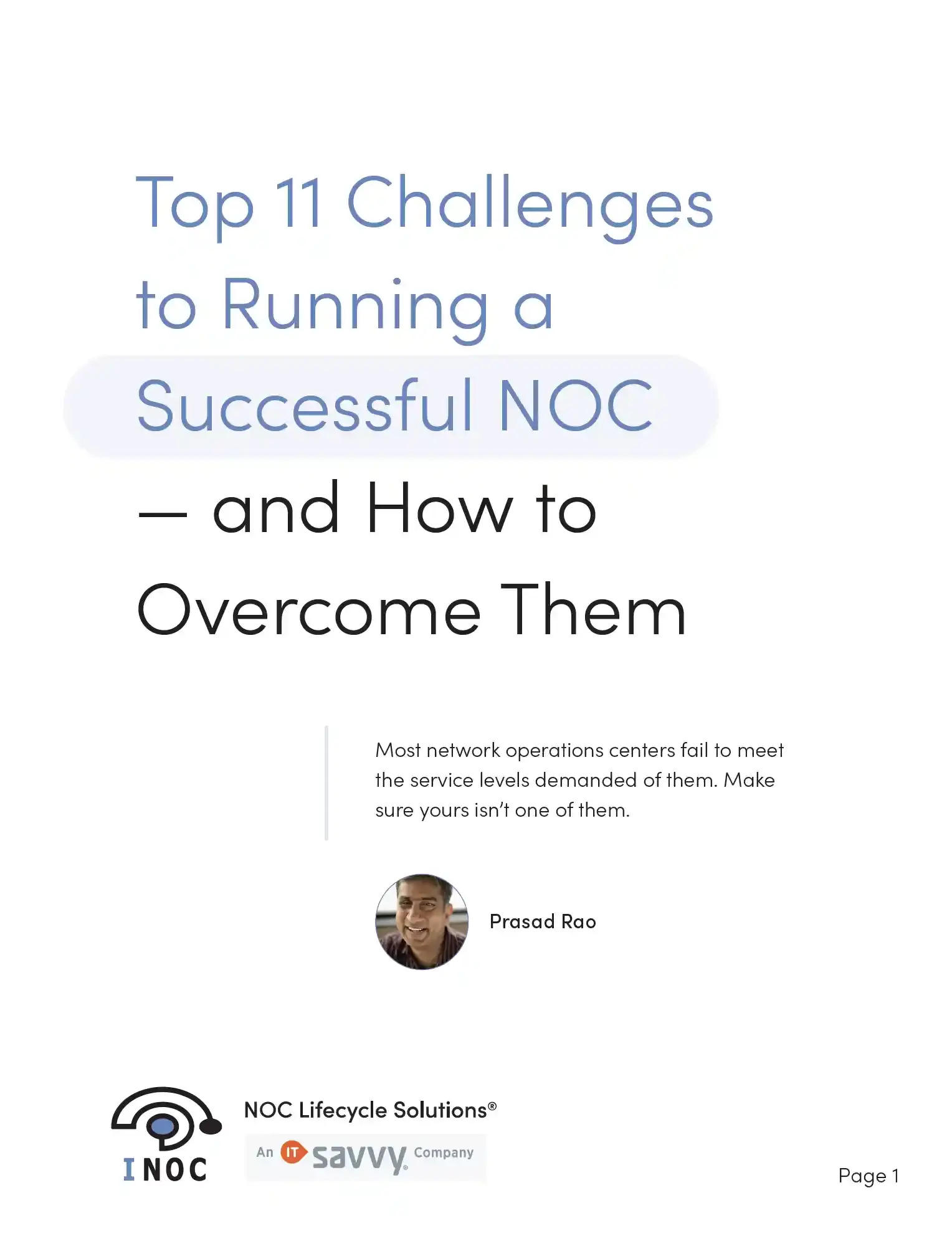
Free white paper Top 11 Challenges to Running a Successful NOC — and How to Solve Them
Download our free white paper and learn how to overcome the top challenges in running a successful NOC.







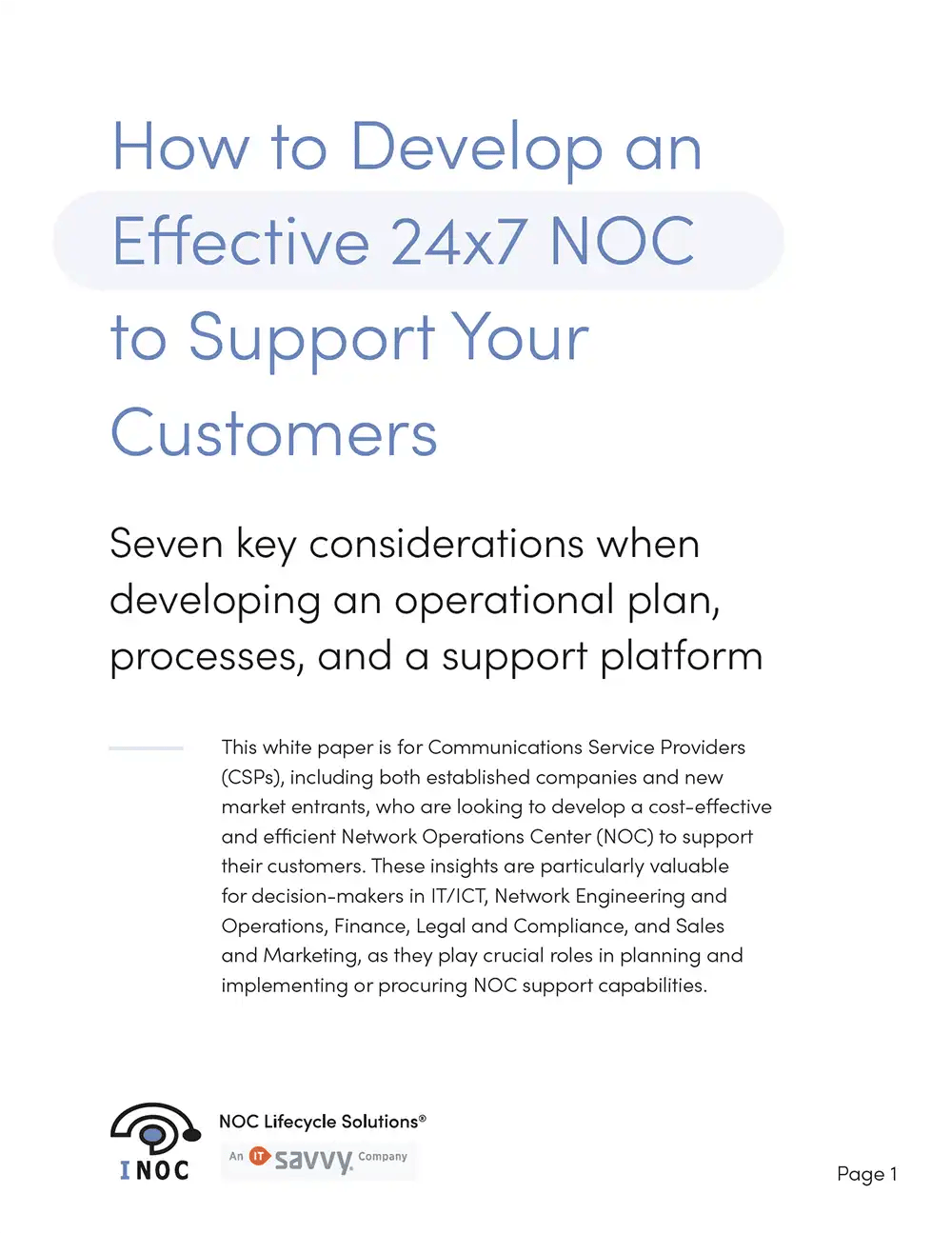

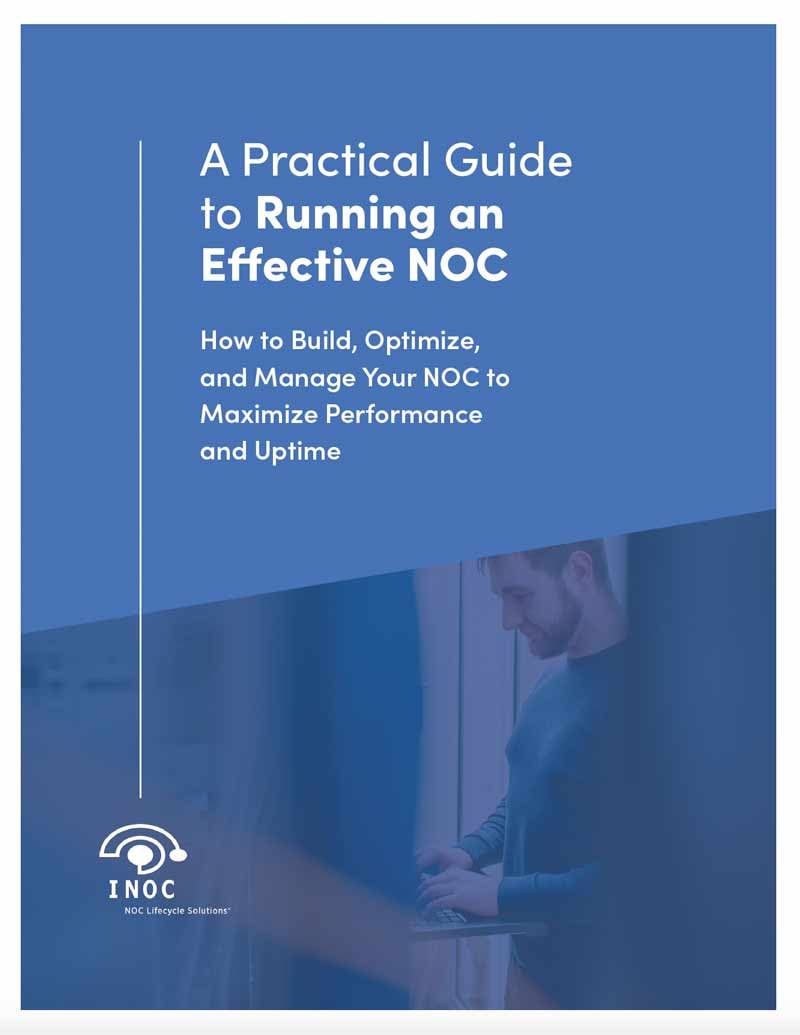
-images-0.jpg?height=2000&name=ino-WP-NOCPerformanceMetrics-01%20(1)-images-0.jpg)

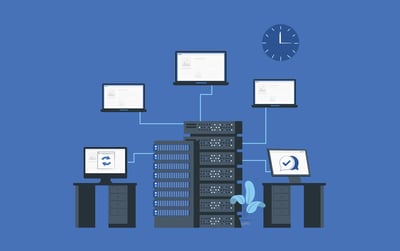

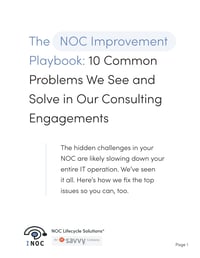

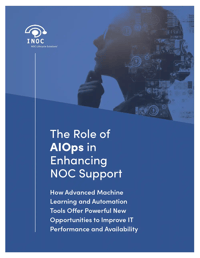

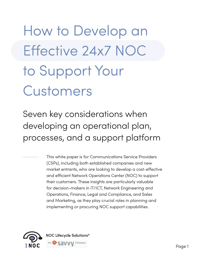
-images-0.jpg?width=200&height=259&name=ino-WP-NOCPerformanceMetrics-01%20(1)-images-0.jpg)